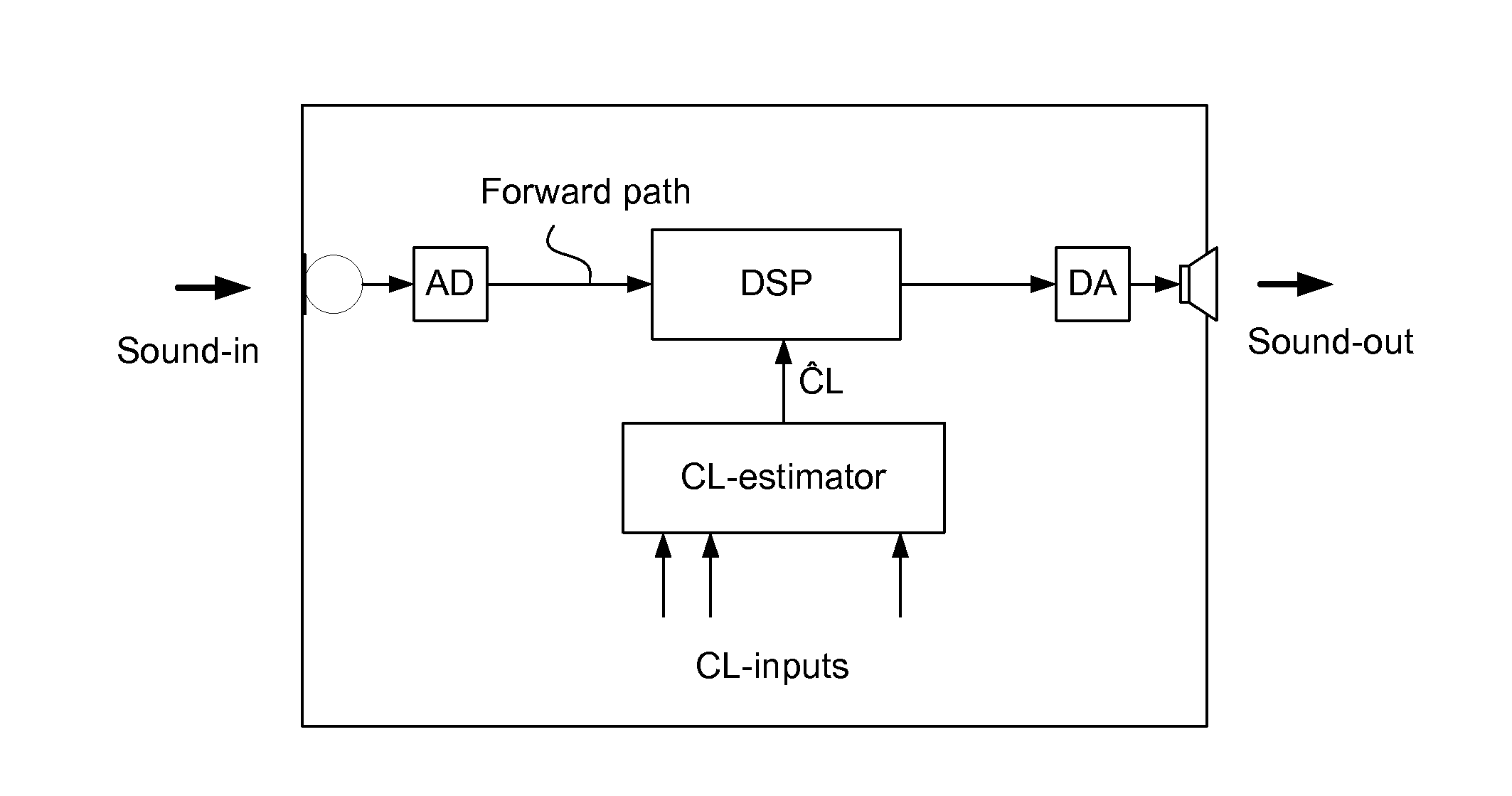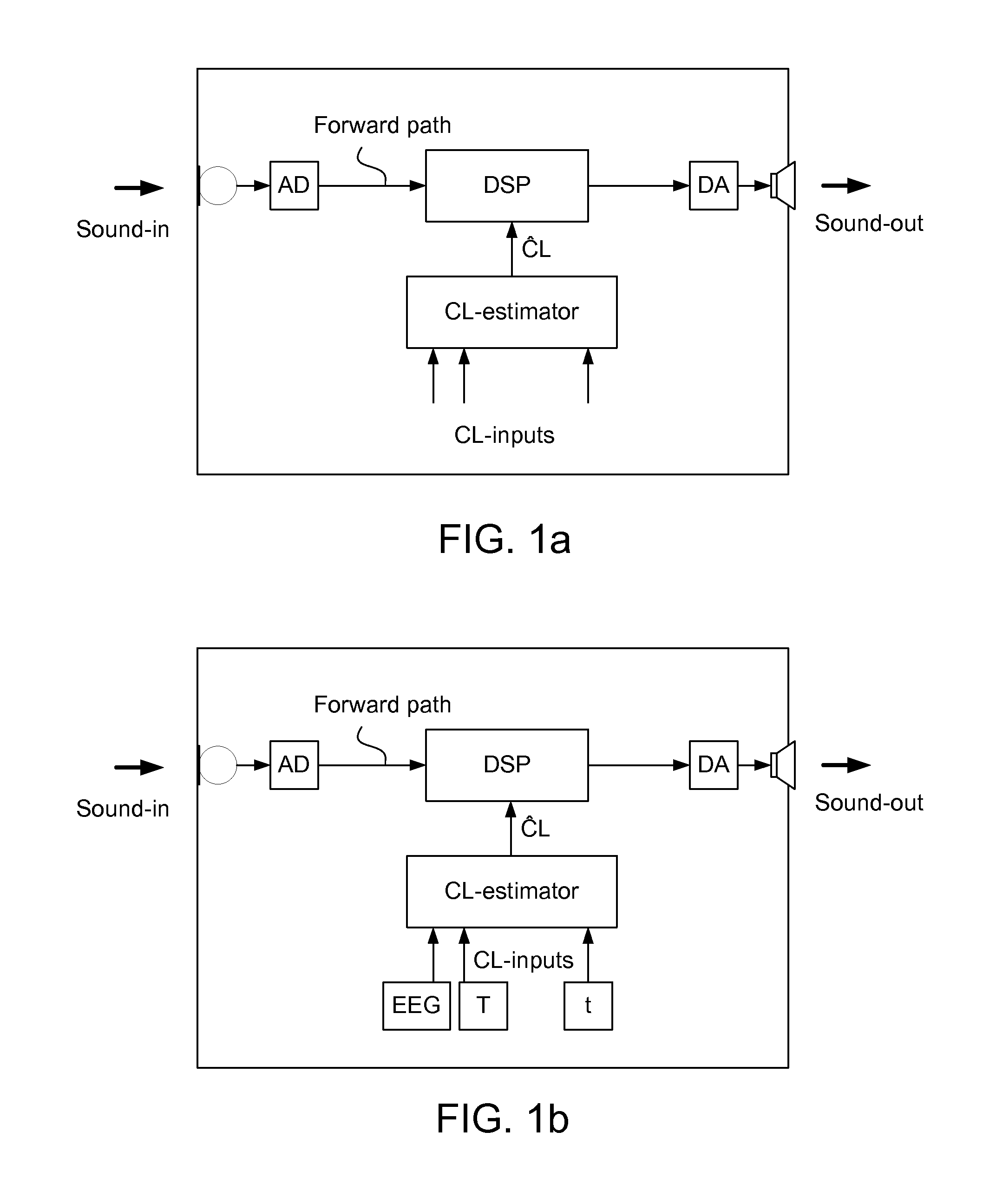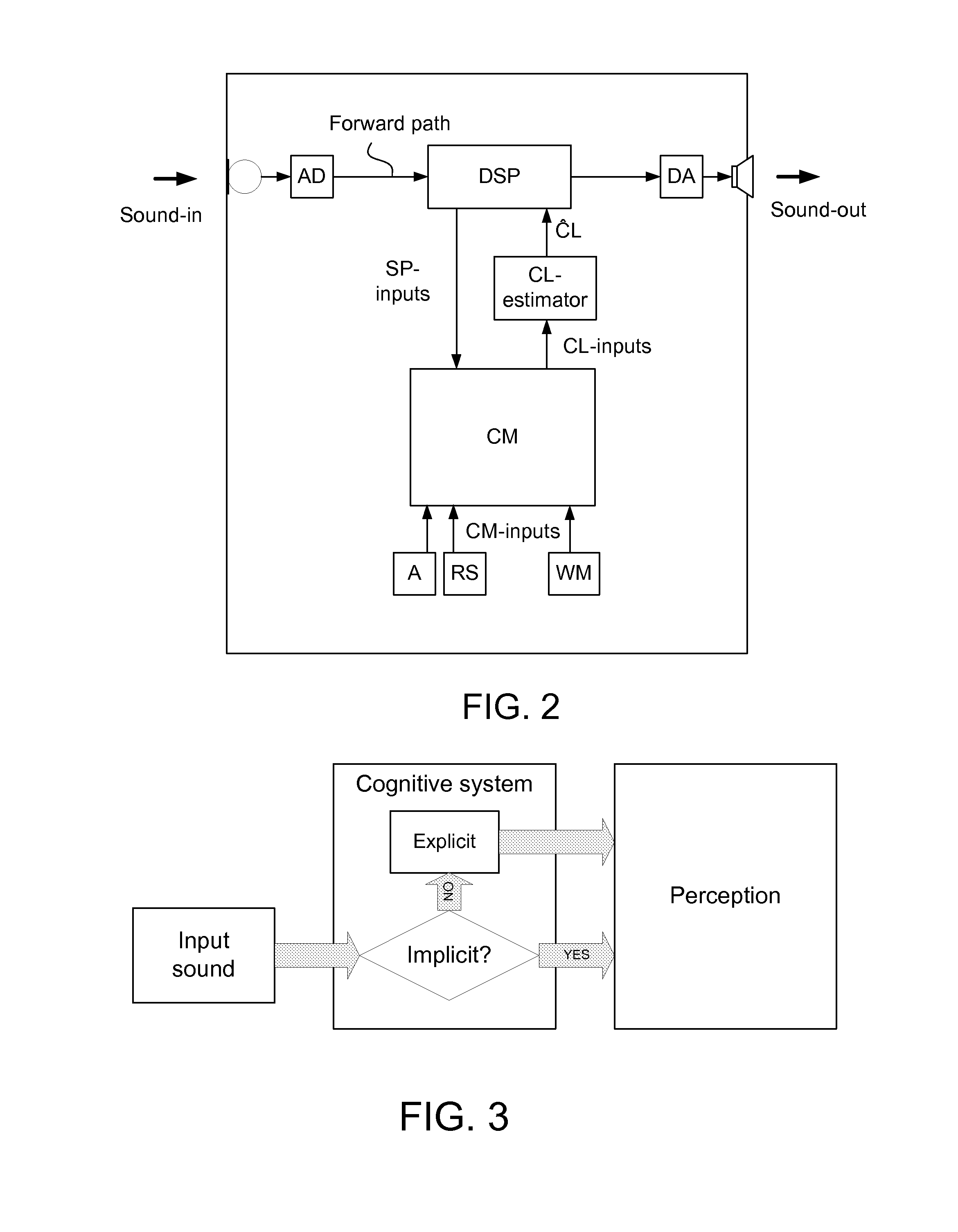Method of operating a hearing instrument based on an estimation of present cognitive load of a user and a hearing aid system
a technology of cognitive load and hearing aid, applied in the field of hearing aids, can solve the problems of insufficient implicit cognitive processes to unlock the meaning of speech stream, large cognitive capacity is required for listening success, and the cognitive processing involved is largely unconscious and implici
- Summary
- Abstract
- Description
- Claims
- Application Information
AI Technical Summary
Benefits of technology
Problems solved by technology
Method used
Image
Examples
first embodiment
[0137]FIG. 1 shows a hearing aid system according to the application.
[0138]The hearing instrument in the embodiment of FIG. 1a comprises an input transducer (here a microphone) for converting an input sound (Sound-in) to en electric input signal, a signal processing unit (DSP) for processing the input signal according to a user's needs and providing a processed output signal and an output transducer (here a receiver) for converting the processed output signal to an output sound (Sound-out). In the embodiment of FIG. 1 (and FIG. 2), the input signal is converted from analogue to digital form by an analogue to digital converter unit (AD) and the processed output is converted from a digital to an analogue signal by a digital to an analogue converter (DA).
[0139]Consequently, the signal processing unit (DSP) is a digital signal processing unit. In an embodiment, the digital signal processing unit (DSP) is adapted to process the frequency range of the input signal considered by the hearin...
second embodiment
[0151]FIG. 2 shows a hearing instrument according to the application, where cognitive model is used in the estimate of cognitive load.
[0152]The embodiment of a hearing instrument shown in FIG. 2 comprises the same elements as shown in FIG. 1a and discussed in relation therewith. The hearing instrument of FIG. 2 further comprises a cognitive model of the human auditory system (CM in FIG. 2). The cognitive model (CM) is e.g. implemented as algorithms with input parameters received via input signals indicative of a users relevant mental skills (CM inputs in FIG. 2), typically customized to the user in question, and inputs indicative of relevant properties of the electric input signal (SP inputs in FIG. 2). Based on the inputs and the model algorithms one or more output signals (CL-inputs in FIG. 2) indicative of the cognitive load of the person in question is / are generated by the cognitive model (CM unit). These outputs are fed to the estimation unit (CL-estimator) for estimating the c...
PUM
 Login to View More
Login to View More Abstract
Description
Claims
Application Information
 Login to View More
Login to View More - R&D
- Intellectual Property
- Life Sciences
- Materials
- Tech Scout
- Unparalleled Data Quality
- Higher Quality Content
- 60% Fewer Hallucinations
Browse by: Latest US Patents, China's latest patents, Technical Efficacy Thesaurus, Application Domain, Technology Topic, Popular Technical Reports.
© 2025 PatSnap. All rights reserved.Legal|Privacy policy|Modern Slavery Act Transparency Statement|Sitemap|About US| Contact US: help@patsnap.com



